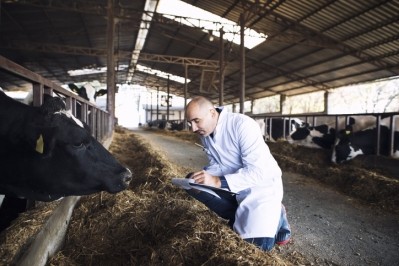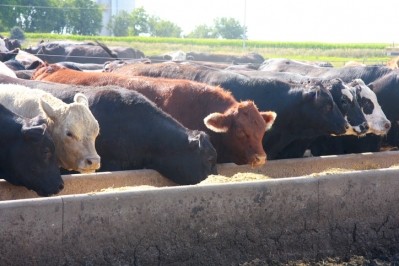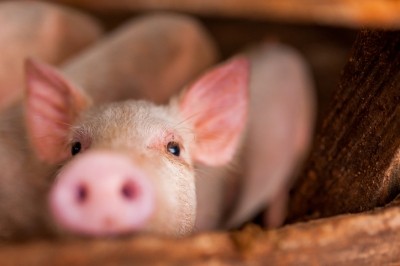Antibiotic reduction: Exploring nutritional building blocks not silver bullets

Sales of antibiotics sold for UK veterinary use in food-producing animals fell by 40% between 2013 and 2017, according to government data.
However, the solutions for reducing antibiotic use have focused heavily on changes to management practices or veterinary approaches and on identifying and eliminating any routine preventative use, rather than on novel supplements, according to the farming industry alliance.
Chris Lloyd, secretary general of RUMA, told this publication: “Everyone likes a silver bullet, but the nutritional answers to reducing antibiotic use on-farm without compromising animal health and welfare or food safety are probably more prosaic than many would like.”
Paul Toplis, who sits on RUMA and represents the Agricultural Industries Confederation (AIC), warns that “in the deluge of promises brought by new additives or supplements, there is a chance of overlooking the essential building blocks of nutrition that optimize health.”
“While there is progress in developing new feed additives, these are adding to what optimum nutrition does, not replacing it,” he said.
Low success rate for “promising” products
Toplis points out that many feed additives are “long on promise and short on delivery.”
“As few as one in five ‘promising’ products is proven in studies to make a positive contribution at farm level,” he said.
Nevertheless, he noted that the feed sector is continuing to actively research and implement a number of different measures to minimize antibiotic use, such as acidifying feed or water, including probiotics, prebiotics or enzymes in the diet, and lowering feed protein levels.
“Some phytobiotic products such as essential oils, herbs or spices are also being researched, but every farm has different challenges and therefore solutions,” he said.
Metals show their mettle
According to Toplis, metals have been shown to be among the most successful additives so far, with zinc oxide paving the way for the virtual elimination of colistin, a highest priority critically important antibiotic (HP-CIA) for veterinary use in the UK.
“The addition of zinc oxide to pig diets at weaning has helped to phase out any colistin use by keeping problematic issues like post-weaning diarrhea from E. coli under control," he said. "But with the Europe-wide ban on zinc oxide looming in 2022 and close scrutiny of copper, another metal with antimicrobial effects, considerable efforts are going into researching alternatives that will help overcome post-weaning challenges and allow growth rates to be sustained.”
The forthcoming ban on zinc oxide has particularly spurred research into feed additives that accelerate the development of the gut and reduce disease susceptibility in pigs at weaning, said Toplis. One example he cites is the inclusion of wheat bran or other fibers in the diet to inhibit the attachment of E. coli to the intestine wall and improve growth rates in the absence of zinc oxide. He added that organic acids, while not new to the feed industry, are being brought into a more central role as well.
“There are some interesting options emerging, but it’s important to look at the building blocks of nutrition first, otherwise you aren’t optimizing the health and defensive capability of the animals and are simply trying to correct problems caused by nutritional imbalances,” he said.
What you feed and how you feed it
Mark Little, technical manager at Trouw Nutrition Ireland, is currently doing a Nuffield Farming Scholarship study on ‘feeding for health, combating antimicrobial resistance.’
“What really interests me are feed additives. This is the focus of my scholarship study and there are a lot companies doing some really good work,” he told this publication.
Blood orange products that work against cryptosporidiosis and medium-chain fatty acids as a treatment for control of salmonella are two of the solutions that he said are offering potential for reducing antimicrobial resistance.
He also takes the view that the way in which animals are fed is as important as what they are fed. For instance, a feeding strategy that works in the US won’t necessarily be right for a livestock producer in Europe.
“Many take the US feed restricted cattle diet strategy as gospel, but what they are missing is that in the US cattle diets tend to be corn-based, whereas in the UK and Ireland most cattle are grass-fed, which results in different body condition,” he said. “The ‘Goldilocks’ strategy might be optimum for high condition US cattle, but my studies have shown that in the UK and Ireland it is beneficial to give additional concentrate during the dry calving period.”
2020 targets
In the meantime, all sectors of UK livestock farming are looking at nutrition among other interventions with a focus on meeting their specific antibiotic use targets by 2020 – a milestone RUMA’s Chris Lloyd says they are all on track to either meet or exceed.
“We believe they are in a good place. However, most of the easily-replaced use of antibiotics has now largely been eliminated so it’s going to get a whole lot harder. We don’t expect to see the same dramatic reductions this year as we’ve had in the past few years,” said Lloyd.















